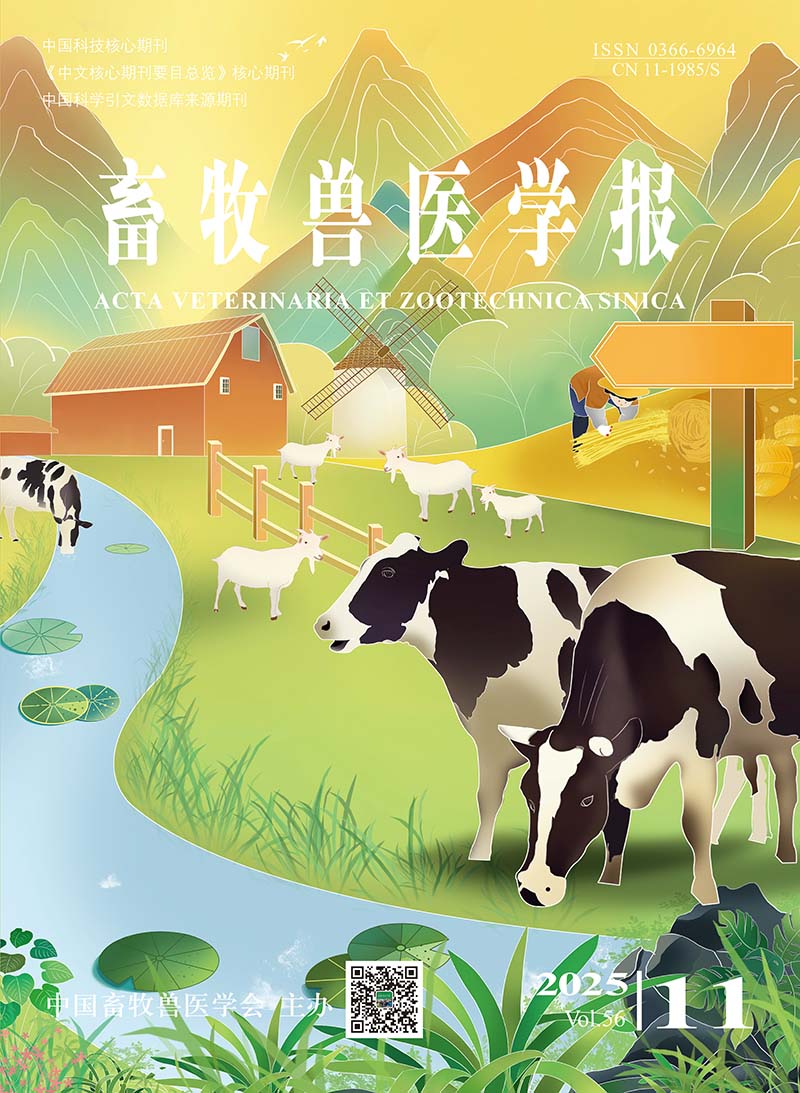-
Study on the Effect and Mechanism of Prostaglandin D2 and F2α on the Corpus Luteum Regression in Sheep
- YANG Heng, SHAO Yanyan, ZHAO Zongsheng, ZHU Mengting, NAN Ying, WANG Mingyuan, FANG Chenhui, WU Pei, XIE Mengting, JIANG Baihui
-
2021, 52(6):
1582-1593.
doi:10.11843/j.issn.0366-6964.2021.06.013
-
 Abstract
(
373 )
Abstract
(
373 )
 HTML( )
HTML( )
 PDF (3669KB)
(
290
)
PDF (3669KB)
(
290
)
-
References |
Related Articles |
Metrics
The objective of this study is to investigate the effects of prostaglandins (PGs) D2 and F2α on the corpus luteum tissue morphology, reproductive hormones and the expression of key genes and receptors in female sheep. Meanwhile, the interrelationship and mechanism of the above factors in the degradation of the corpus luteum are analyzed, which can provide a new theoretical basis for ensuring the continuous breeding of female animals. Sixteen Kazakh sheep were randomly divided into 4 groups, and were injected intramuscularly in uterus with PGD2, PGF2α, PGD2+PGF2α and normal saline (control group) during the luteal phase of the estrus cycle, respectively. HE staining combined with physical photographs were used to compare the morphological changes of the corpus luteum before and after the treatment. ELISA method was used to detect the changes in the concentration of P4, E2, PGD2 and PGF2αin the peripheral serum; qRT-PCR and Western blot were used to detect the key synthase genes HPGDS, PGFS and their receptors (DP1, CRTH2, FP) mRNA and protein expression levels. Results showed that, compared with the control group, the corpus luteum degeneration effect was the most obvious in the PGD2+PGF2α group, followed by the PGF2α group and PGD2 group. ELISA results showed that with the passage of time after treatment, P4 concentration in different experimental treatment groups showed a significant downward trend (P<0.05), and the change trend was the most significant in the PGD2+PGF2α group (P<0.05). However, the concentrations of E2, PGD2 and PGF2α showed different differences in different groups. Among them, the PGD2 and PGF2α concentrations in the PGD2+PGF2α group were significantly decreased (P<0.05); the E2 concentration was significantly increased (P<0.05), and the PGD2 concentration was significantly decreased (P<0.05) in the PGF2α group; the E2 concentration was significantly decreased (P<0.05), and the PGD2 concentration was significantly increased (P<0.05) in the PGD2 group. Results of qRT-PCR and Western blot showed that, compared with the control group, HPGDS mRNA and protein expression were significantly down-regulated (P<0.05), but PGFS, CRTH2 and FP mRNA and protein expression were significantly up-regulated (P<0.05) in PGD2+PGF2α group; In the PGF2αgroup, HPGDS mRNA and protein expression were significantly down-regulated (P<0.05), and the mRNA and protein expression levels of other genes were significantly up-regulated (P<0.05); In the PGD2 group, the expressions of HPGDS, DP1, PGFS and FP mRNA and protein were significantly up-regulated (P<0.05). Meanwhile, in the detection of gene expression of different receptors, it was found that the expression of DP1 receptor was significantly higher than that of the CRTH2 receptor in the PGD2 group (P<0.05), while the expression of CRTH2 was significantly higher than that of DP1 in the PGF2α group (P<0.05). In summary, the above results showed that whether PGD2 was used alone or in combination with PGF2α, it could promote the degradation of CL, especially when the two were combined, which had an obvious synergistic effect to promote dissolution of CL. This mechanism may be related to the hormones level, the expression of key synthetases and receptor types in vivo, which lays a foundation for a comprehensive understanding of the regulatory mechanism of CL degradation in mammals, and provides a new idea for further optimization of efficient reproductive technology (especially PGs scheme).






